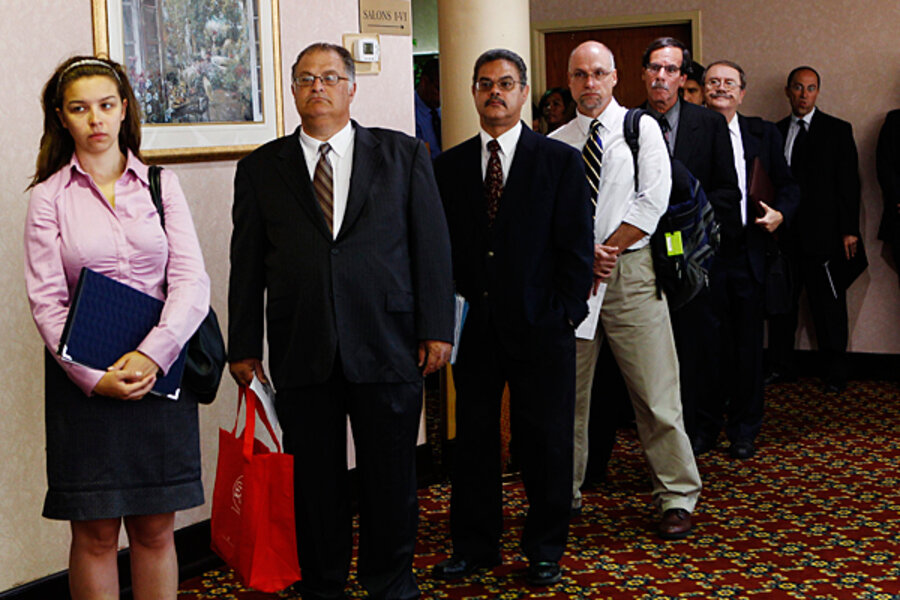Troubling reason for drop in unemployment rate: People exiting work force
Loading...
America's official unemployment rate declined in June, but the reason was largely because people are opting out of the labor force – not because employers are adding lots of new jobs.
It's a sign of how difficult the job market remains, and it comes as Congress recessed for the July 4 holiday without extending jobless benefits for the long-term unemployed.
Despite signs of economic recovery in recent months, the overall labor force shrank by 652,000 in June, even though the US population grew, the Labor Department reported Friday. That helped push the unemployment rate down to 9.5 percent, from 9.7 percent in May.
If the labor force participation rate had held steady for the month, at roughly 65 percent of the civilian population, the unemployment rate would have gone up – to about 10 percent – based on the current number of jobs in the economy.
"As the US population grows by about 200,000 each month, the labor force is also expected to grow," economist Charles McMillion said Friday in a report analyzing the monthly job-market data. In his view, the situation "almost guarantees that unemployment will again rise to over 10 percent when more of the unemployed again agree to be counted."
Earlier this year, as the job market began to show some signs of revival, labor force participation rose – meaning more people began looking for work. But the influx may have outstripped the number of available new jobs, sending some discouraged workers out of the labor force in the past two months.
The reversal, by Mr. McMillion's calculation, means that the labor force is no larger than it was when the recession began in late 2007, even though the adult population has risen steadily since then. And 1 million fewer people are in the work force now than one year ago.
The central problem is that, with so many already unemployed, there are multiple job seekers for every open position. Some 6.8 million people have been jobless for 27 weeks or more. Legislation in the Senate to extend jobless benefits, which have begun to run out for many long-term unemployed, stalled amid disagreement over how to pay for it. The House has passed an extension of jobless benefits.
Who's leaving the labor force, or not entering to begin with?
Labor Department data suggest that the problem spreads across virtually all demographic groups, but the trend is strongest among the men, African-Americans, and the young. Regionally, the Midwest appears to be most affected. Here are the numbers:
•Overall, labor force participation has fallen by 1.5 percentage points since January 2008, as the recession had just begun (from 66.2 percent of civilian adults – excluding those in prison – to 64.7 percent).
•Among men, participation has fallen 2 percentage points, while it has fallen 1.1 percentage points among women. Looking at 2010 alone, men's participation has risen slightly – perhaps a sign of rebounding hopes or expectations of finding work, while women's participation has continued to edge down.
•Among African-Americans, participation has fallen 2.1 percentage points, versus 1.4 for whites.
•By age, participation has declined most for teens (7.1 percentage points) and young workers ages 20 to 24 (down 3.3 percentage points). Declines have also occurred among older workers, but by amounts smaller than the national average.
•For one age group, those 55 and over, participation has actually risen during and after the recession – a sign of the headwinds facing many people in or near retirement. Many homes and investment portfolios have lost value.
A silver lining in the June jobs data is that the private sector added at least some jobs (83,000) for the sixth straight month.
Related:





